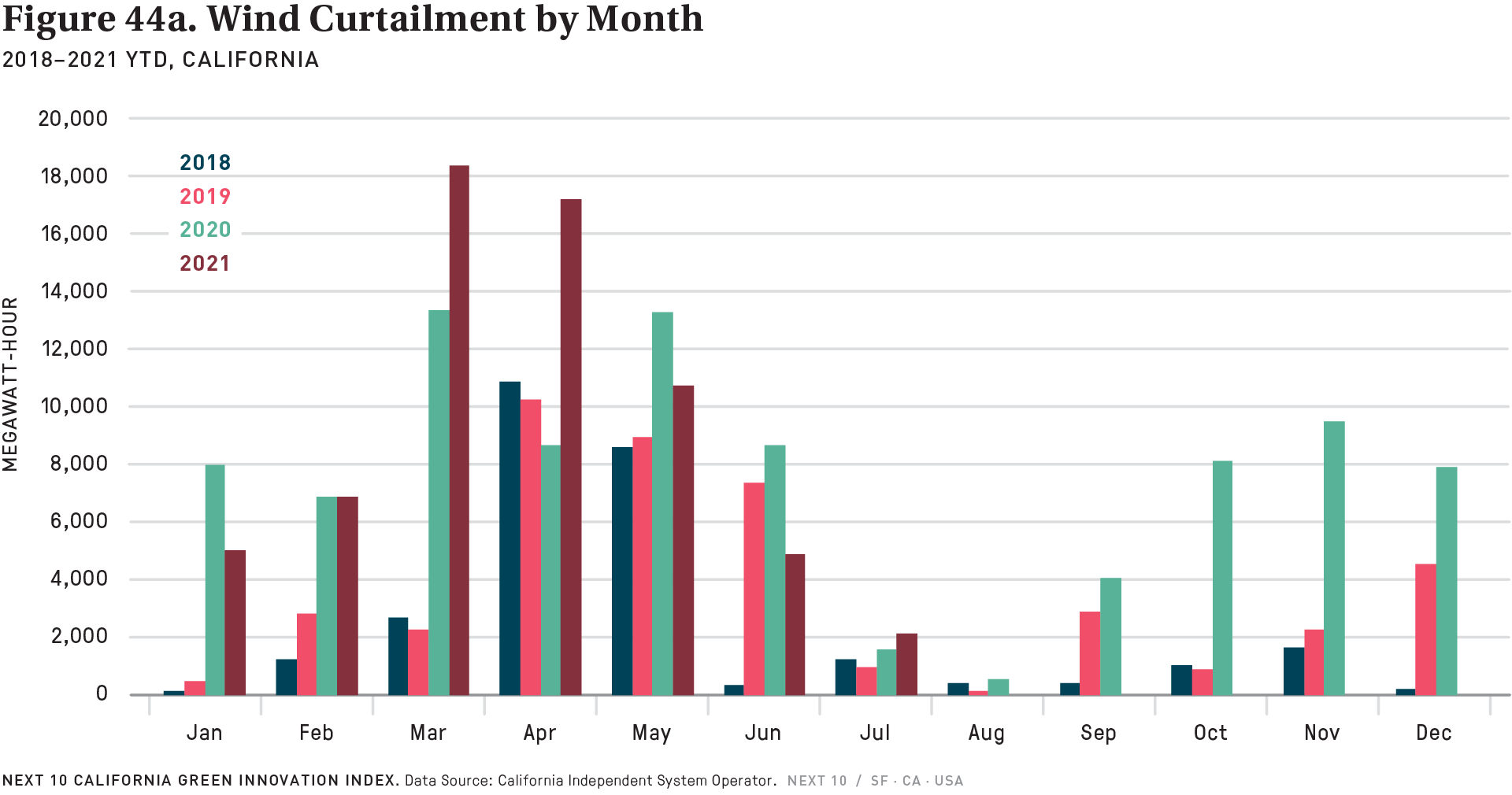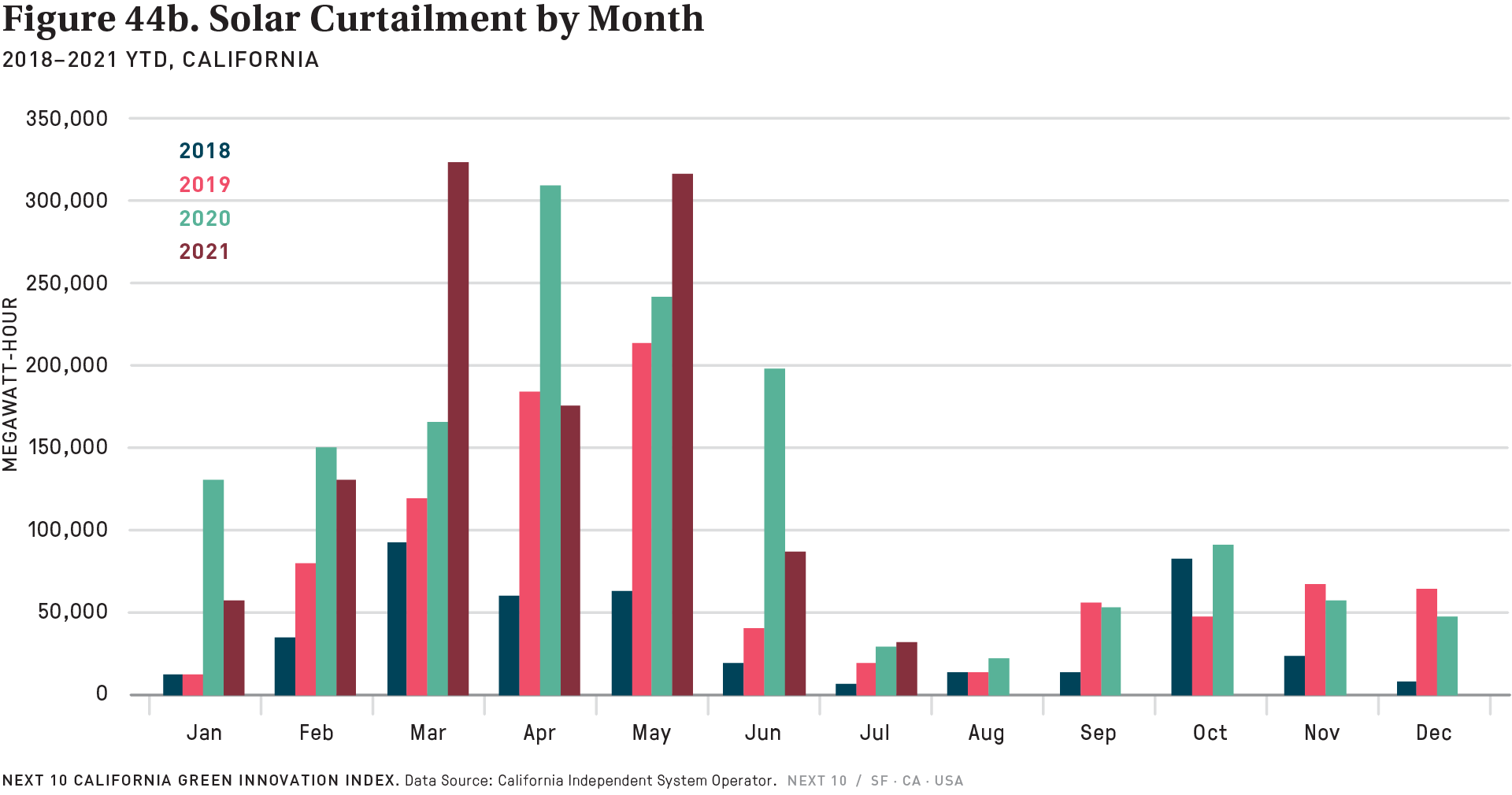Challenge
- As more renewables come online, California faces an increasing amount of wind and solar generation curtailment,98 especially during the middle of the day (from 10 AM to 2 PM), when there is an oversupply of solar. In California, curtailments have been rising every year, driven by growth in solar power to meet the state’s aggressive clean energy goals. In 2020, curtailment totaled 1,587.5 gigawatt-hour electricity generated (90.3 GWh from wind and 1,497.2 GWh from solar) according to California Independent System Operator (CAISO). This curtailment represents a 64.5 percent increase over 2019 (965.2 GWh), which itself is over double (+109.4%) the curtailment amount in 2018 (461.0 GWh). Curtailment tends to be at the highest levels from March to June and lowest from July to December. Increased installation of energy storage and greater integration with the Western grid could help reduce the need for renewable curtailment.
98 Curtailment is the reduction of output of a renewable resource below what it could have otherwise produced. At times power generators may produce output that is not needed. In the absence of energy storage systems, the surplus may have to be dumped or the power plant output turned down or switched off for a while.
Highlight
- Although curtailment has been increasing, it makes up a small percentage of total in-state generation. In 2020, in-state generation from solar was 29,446 GWh; the curtailment represents 5.1 percent of in-state generation. Wind curtailment was less than one percent in 2020. Electricity generated from renewable sources tend to be higher when curtailment is also high.
More About
Renewable Energy
Related Content

